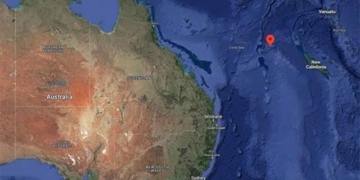This resource is the “trump card” in the new energy race worldwide.
White dwarf stars that are exploding are believed to be the ultimate source of most Lithium in our Solar System. However, on Earth, there are certain environments where the soft, lightweight, silvery-white metal is concentrated and easily extracted, particularly in brine aquifers found beneath desert salt flats.
Such conditions are abundant in the Atacama Desert in South America, home to some of the largest Lithium mines and extraction operations in the world. They can also be found in the Clayton Valley of Nevada – which hosts the only operational Lithium mine in the United States.
The town of Silver Peak was established in the 1860s around gold and silver mines, but since the 1960s, it has shifted to Lithium extraction. Beneath the Clayton Valley lies a dormant volcano that has left behind rich Lithium deposits, known as the Silver Peak mine, located at an elevation of 1,300 meters above sea level, according to Westernmininghistory.
Inside America’s only Lithium mine
Most people know that Lithium is essential for batteries, but they might not be aware of what it actually is. Lithium is an alkali metal found in various places around the world and has been used to produce products like batteries and greases since ancient times. While Lithium is not as abundant as other metals, it is also less likely to corrode or oxidize, making it one of the most useful metals we have today.
Lithium is changing the way we interact with the world and is considered the “silent hero” of the clean energy transition as governments seek to meet climate goals by switching from gasoline to electric vehicles.
Over 50 countries have proposed bans on gas-guzzling vehicles, and the global adoption of electric vehicles will soon cause demand for Lithium to soar. By 2035, 30% of the U.S. population will be unable to purchase gasoline-powered cars, and not just in the U.S.; worldwide, electric vehicle sales are skyrocketing.
The battery sector currently accounts for approximately 70% of global Lithium demand, a figure expected to rise to 96% by 2040. According to the International Energy Agency, we will need 4-6 times more Lithium by 2030. This is why many refer to Lithium as White Gold. Tesla billionaire Elon Musk calls it ‘the new oil.’
Only 8 countries produce the majority of the world’s Lithium. The top producers are Australia, Chile, China, Argentina, Brazil, Portugal, Zimbabwe, and the United States.
According to NASA, the Silver Peak mine produces about 1% of the world’s annual Lithium output. This mine has been the sole supplier of Lithium for the U.S. for decades.
The Silver Peak mine plans to double its output by 2025 to meet the rising demand for Lithium as electric vehicles begin to gain a foothold in the country.
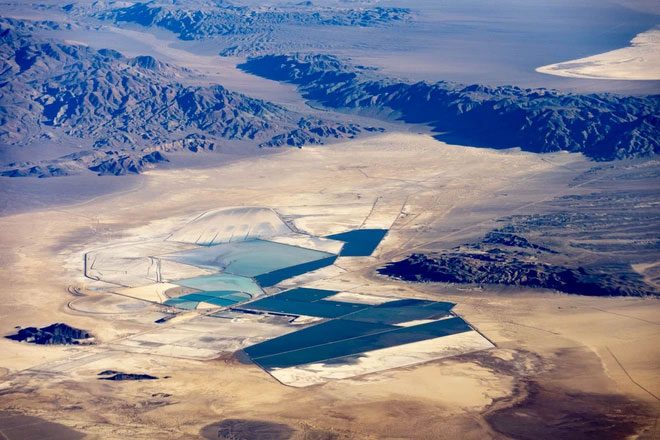
Silver Peak Lithium Mine in Clayton Valley, Nevada, viewed from above. (Photo: Geologypics).
Albemarle Corp., a specialty chemicals company based in North Carolina, USA, is the sole operator of the Silver Peak Lithium mine. The company’s Lithium production facility is a massive complex occupying a vast basin surrounded by mountains on all sides. As of 2020, Albemarle Corp. was the largest Lithium supplier for electric vehicles.
Foote Mineral Company began producing Lithium carbonate from brine at Silver Peak in the 1960s, and Albemarle Corp. acquired the facility in 2015.
Lithium sources can vary based on its concentration. Lithium extracted from brine is typically in the form of Lithium chloride. Lithium mined from hard rock is often Lithium oxide. Both forms can be converted into Lithium carbonate and Lithium hydroxide, derivatives used to produce Lithium-ion batteries.
The Lithium source of the Silver Peak mine is brine extracted from the Playa of Clayton Valley. Albemarle Corp. produces about 5,000 tons of Lithium carbonate equivalent (LCE) annually. However, with increasing demand, that figure is not sufficient.
Like many Lithium mines worldwide, the facility at Silver Peak is adding new pumps and evaporation ponds to try to produce even more “white gold.” The demand for Lithium produced in the U.S. is particularly strong due to tax incentives for consumers buying electric vehicles with domestically produced and assembled parts.
Albemarle Corp. estimates that for every 1 kg of CO2 emitted during the Lithium production cycle, at least 50 kg of CO2 will not be released into the environment if each electric vehicle uses Lithium batteries for a year.
The ideal climate for Lithium extraction is generally arid, punctuated by seasonal rains. This allows water to pool in shallow, saline lakes and then evaporate in the summer – a cycle that helps concentrate Lithium. That is the natural way.
However, the human extraction of Lithium is not always as simple as digging it out of the ground. Lithium is found in brine, a water solution with a high concentration of salt. This process requires pumping water from these salt flats, then using electricity to separate the Lithium salts. It can take weeks or months to complete but produces a higher quality product than hard rock Lithium mining.
Here are images of the Lithium mine in Nevada, USA:
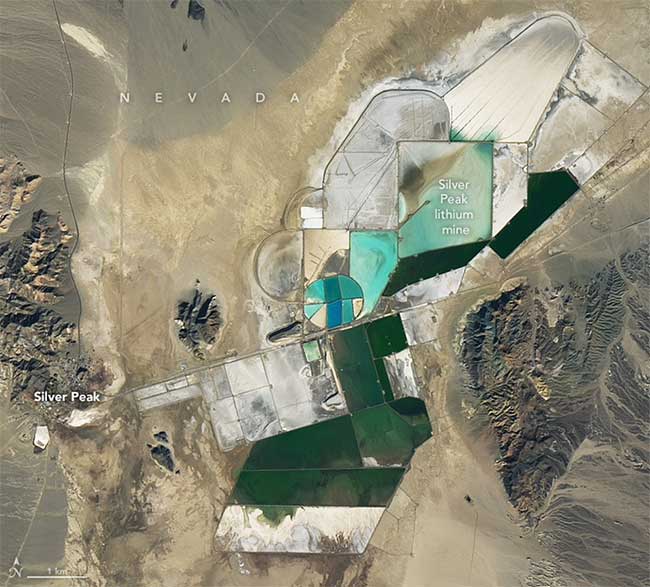
NASA satellite image taken on January 2, 2023, of Silver Peak in Nevada, USA. (Photo: NASA).

The mine pumps brine to the surface and transfers the brine into a series of shallow ponds for evaporation. (Photo: John Clausen/Times-Bonanza).
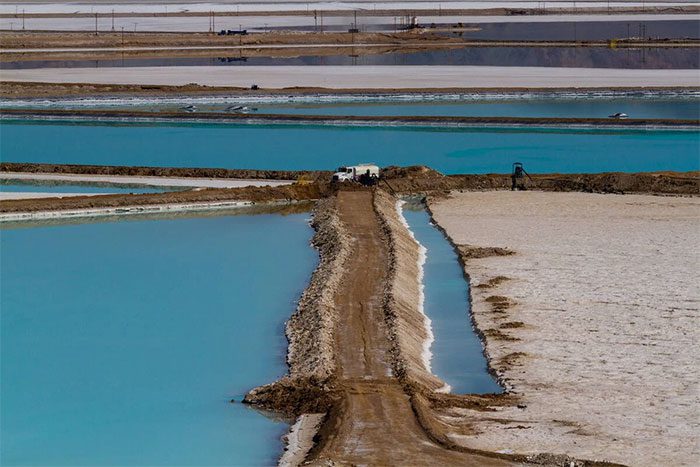
The color change in the pond is due to variations in the lithium concentration in the water; the lighter blue pond has a higher lithium concentration. (Photo: John Clausen/Times-Bonanza).
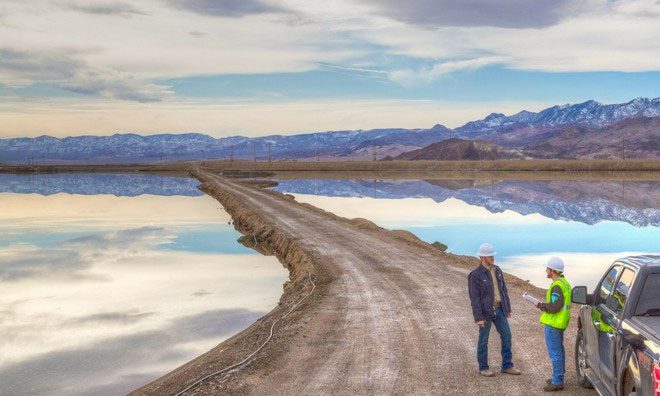
Lithium is extracted using evaporation ponds at the Silver Peak mine near Tonopah, Nevada. (Photo: Albemarle Corp).

(Photo: John Clausen/Times-Bonanza).

(Photo: John Clausen/Times-Bonanza).


















































